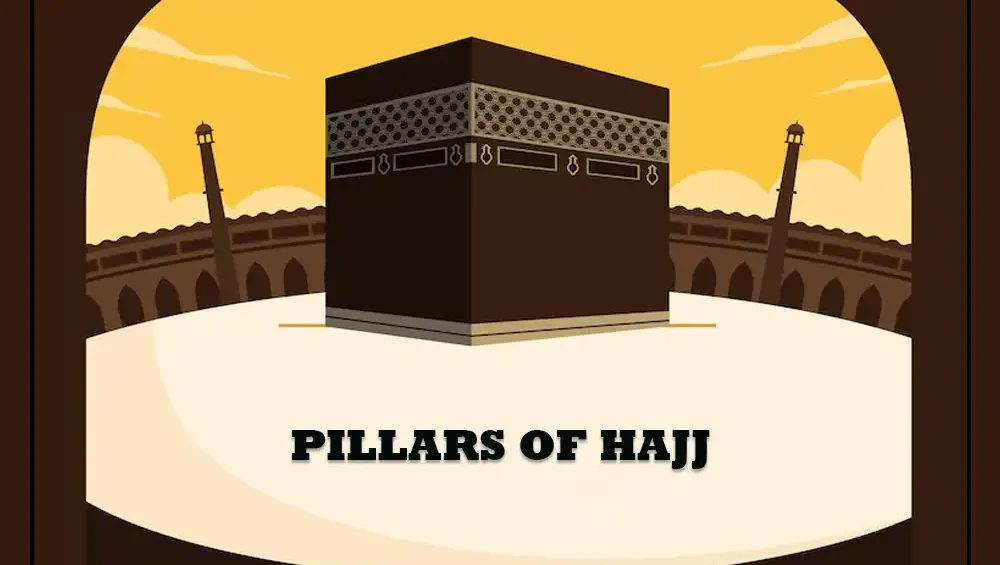The holy Kaaba, the home of God and one of the fifth pillars of Islam, must be visited. Hajj is the most important Islamic pilgrimage, requiring all Muslims to complete it at least once in their lifetime. It is a necessary pilgrimage that Muslims must take at least once in their lifetime. Hajj happens during the prior month of the Islamic calendar, Dhul Hijjah, and finishes with Eid ul-Adha. It is considered both a rewarding and spiritually cleansing deed. Executing the hajj pillar pilgrimage allows for heightening a Muslim’s wisdom of the practices of Prophet Ibrahim (AS), his wife Hajar (AS), and Prophet Muhammad (PBUH).
PILLARS OF HAJJ:
Since one is going to enter the holiness of Allah’s house, one must stick to strict rules when dressing in Ihram attire. Visiting the House of Allah is mandatory for Muslims, and after completing the pillars of Hajj, they are forgiven all their past sins, and one can get to Jannah or paradise. These guidelines should be followed by every Muslim alike to avoid unwanted attention. Here is everything you require to understand about the four leading pillars of Hajj and the three compulsory actions without fulfillment of which the expedition will be assumed invalid.
According to the thought of the prevalence of scholars, 5th pillar of Islam Hajj has four pillars, which are:
1- IHRAM:
Ihram is not just two elements of plain cloth bound together; it is a condition during which one has to stick to precise timings and strict directions and restrictions. Reaching into the state of Ihram demands a person to purify oneself and affirm the belief and preference to perform Hajj. The Messenger (PBUH) of Allah SWT states that Acts are according to intentions, and every Muslim will be rewarded according to his discretions.
Note that a pilgrim must assume Ihram at the miqats by performing wudu, purifying their bodies, wearing clean clothes, and making intention (niyyah), followed by reciting specific prayers to attain the blessings of Allah Almighty.
2- SAEE:
Explorers are told to stroll between the slopes of Safa and Marwa to remember the battle of Hajra (RA), the spouse of Prophet Ibrahim (AS). She ran seven times between these hills to provide Prophet Ismail (AS), her infant son, with food and water.
As a result, the Muslim Ummah has been instructed by the Prophet Muhammad (PBUH) to walk between as-Safa and al-Marwa in the same manner that it is an essential part of the Hajj rituals.
The Prophet Muhammad (PBUH) said, “Perform Saee for Allah SWT has decreed that you perform Saee between as-Safa and al-Marwa,” (Ahmed). Aisha (RA) stated, “The Prophet Muhammad (PBUH) made Tawaaf, and the Muslims made Tawaaf (i.e., between the Safa and Marwah), so it has become obligatory.Whoever does not make Tawaaf between the Safa and Marwah will be rejected by Allah from the Hajj”. (Muslim)
3- WAQFAT ARAFAH:
Arafah has a period of standing and praying that begins at noon on the 9th Dhul Hijjah and lasts until the 10th Dhul Hijjah. Waqfah Arafah is an essential part of the Hajj, so pilgrims must complete it at the specified place and time. Prophet Muhammad (PBUH) said that Hajj is the standing at Arafah. If anyone reaches there before the Fajr Prayer on the night of Al-Muzdalifah, their Hajj will do. (Abu Dawud)
4- TAWAF AL IFADAH:
According to Islamic scholars, the last pillar stage of the Hajj begins with the pilgrims standing on Arafah until the end of their lives. During Tawaaf Al Ifadah, pilgrims circle the holy Kaaba seven times and even try to raise their hands to the Hajr e Aswad (Black Stone) to ask for blessings and forgiveness.
Tawaaf Al Ifadah is an obligatory pilgrim and is not allowed to leave Mecca without doing so. When a person cannot perform Tawaaf Al Ifadah due to illness, someone else should perform it, or an animal should sacrifice.



